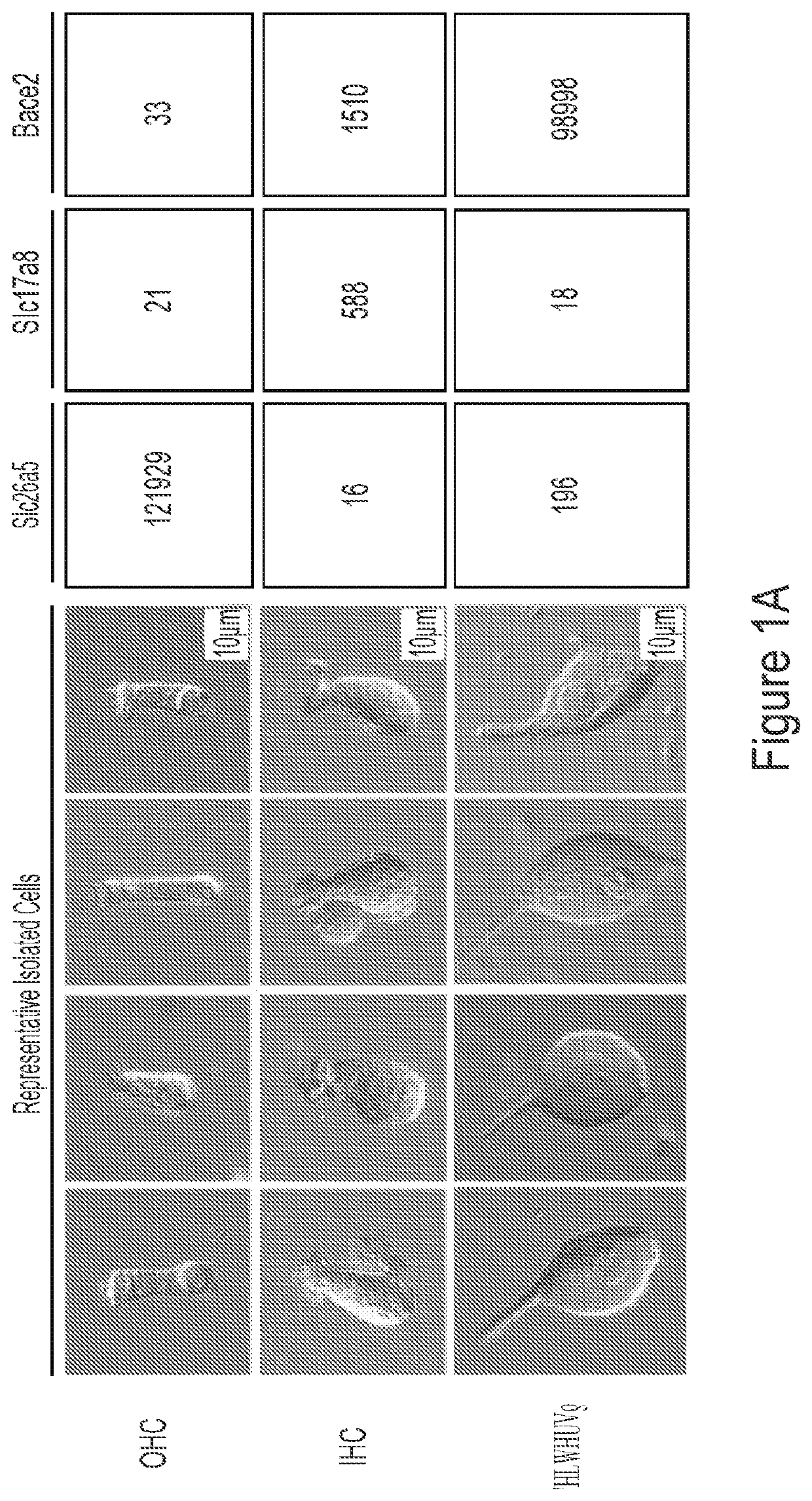Methods of treating genetic hearing loss
- Summary
- Abstract
- Description
- Claims
- Application Information
AI Technical Summary
Benefits of technology
Problems solved by technology
Method used
Image
Examples
example 1
Autosomal Dominant Non-Syndromic Hearing Loss
[0285]In the evaluation of persons with hearing loss, comprehensive genetic testing is now recognized as the most informative clinical test. Because it offers the highest diagnostic rate, healthcare providers are able to make evidence-based decisions and provide better and more cost-effective patient care. In a recent study of 1119 sequentially accrued patients who presented with sensorineural hearing loss (SNHL) in at least one ear (there were no exclusionary criteria based on age, age of onset, phenotype or previous testing), comprehensive genetic testing using OtoSCOPE® genetic testing panel an underlying genetic cause for hearing loss was identified in 440 patients (39%). Phenotypic diversity impacted the overall diagnostic rate. In patients with symmetric hearing loss and a positive family history, diagnostic rates were 67% and 55% for ADNSHL and autosomal recessive non-syndromic hearing loss (ARNSHL), respectively. Inheritance patte...
example 2
Feasibility of RNAi as a Broadly Applicable Tool to Prevent and Reverse Genetic Hearing Loss
[0305]The present experiments in mouse models of ADNSHL using RNAi at different time points after the onset of hearing loss to determine investigate whether a ‘window of therapeutic opportunity’ exists during which hearing loss is reversible. It is hypothesized that there is a period of time after the onset of hearing loss in the Beethoven (Bth) mouse during which the loss is not permanent. By suppressing the endogenous deafness-causing Bth allele during this ‘time window,’ the hearing loss can be reversed by RNAi-based gene therapy. Beyond this ‘time window,’ it is hypothesized that the hearing loss will continue irrespective of the ability to suppress the Bth allele. To test this hypothesis, artificial miRNA that was validated in Bth mice treated at P0-2 is used treat animals over a range of time points initially focusing on P15 and P60.
[0306]In the present methods, RNAi is used to silence ...
example 3
REFERENCES
[0368]1. Smith, R. J., Bale, J. F., Jr. & White, K. R. Sensorineural hearing loss in children. Lancet 365, 879-890. (2005).
[0369]2. Shibata, S. B. & Raphael, Y. Future approaches for inner ear protection and repair. J Commun Disord 43, 295-310, doi:10.1016 / j.jcomdis.2010.04.001 (2010).
[0370]3. Lalwani, A. K. & Mhatre, A. N. Cochlear gene therapy. Ear Hear 24, 342-348 (2003).
[0371]4. Hildebrand, M. S. et al. Advances in molecular and cellular therapies for hearing loss. Mol Ther 16, 224-236, doi:6300351 [pii] 10.1038 / sj.mt.6300351 (2008).
[0372]5. Shibata, S. B., Budenz, C. L., Bowling, S. A., Pfingst, B. E. & Raphael, Y. Nerve maintenance and regeneration in the damaged cochlea. Hear Res 281, 56-64, doi:10.1016 / j.heares.2011.04.019 (2011).
[0373]6. Wang, H. et al. Efficient cochlear gene transfection in guinea-pigs with adenoassociated viral vectors by partial digestion of round window membrane. Gene Ther 19, 255-263, doi:10.1038 / gt.2011.91 (2012).
[0374]7. Jero, J. et al. Co...
PUM
| Property | Measurement | Unit |
|---|---|---|
| Fraction | aaaaa | aaaaa |
| Mass | aaaaa | aaaaa |
| Mass | aaaaa | aaaaa |
Abstract
Description
Claims
Application Information
 Login to View More
Login to View More - R&D
- Intellectual Property
- Life Sciences
- Materials
- Tech Scout
- Unparalleled Data Quality
- Higher Quality Content
- 60% Fewer Hallucinations
Browse by: Latest US Patents, China's latest patents, Technical Efficacy Thesaurus, Application Domain, Technology Topic, Popular Technical Reports.
© 2025 PatSnap. All rights reserved.Legal|Privacy policy|Modern Slavery Act Transparency Statement|Sitemap|About US| Contact US: help@patsnap.com



